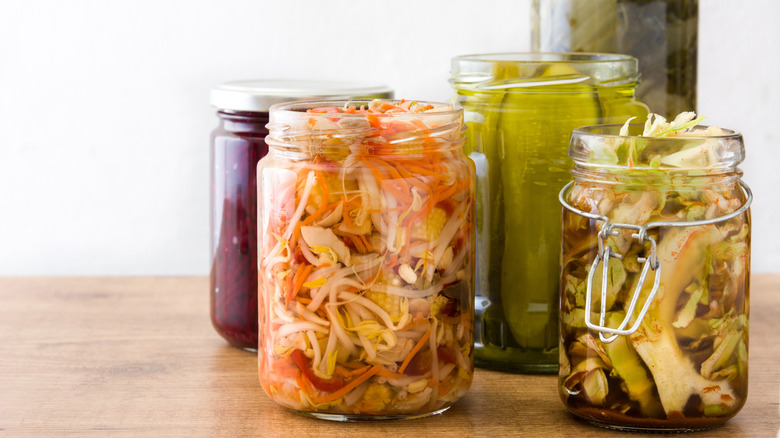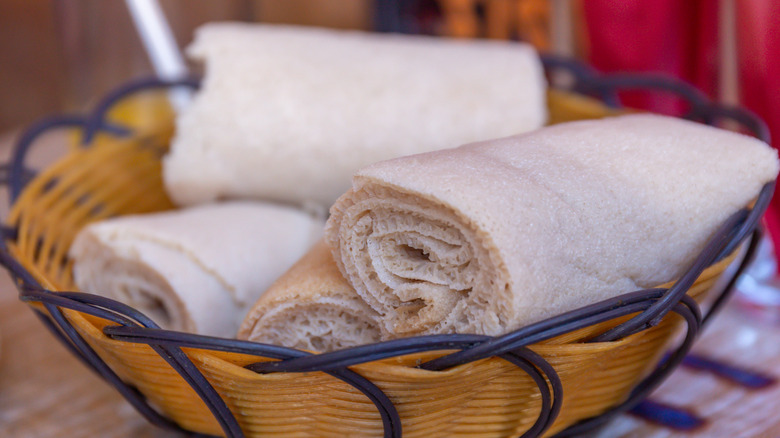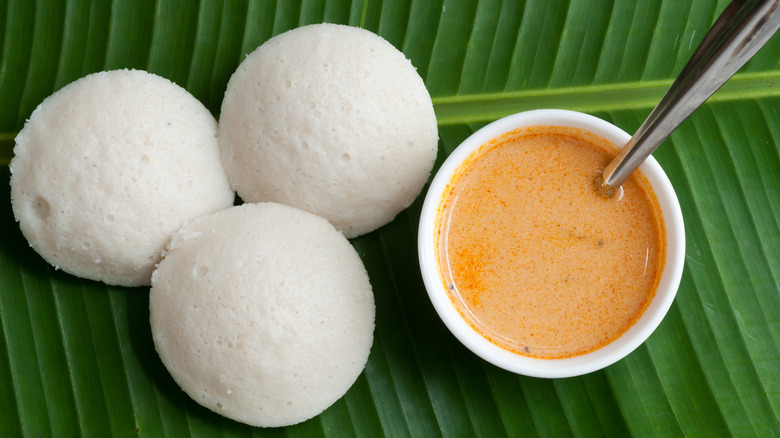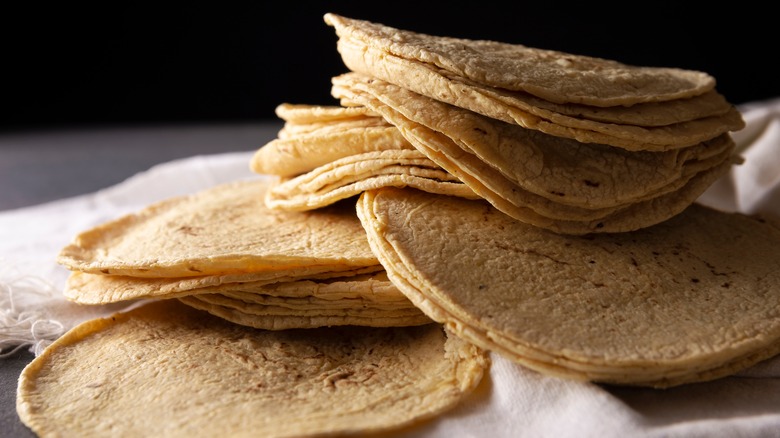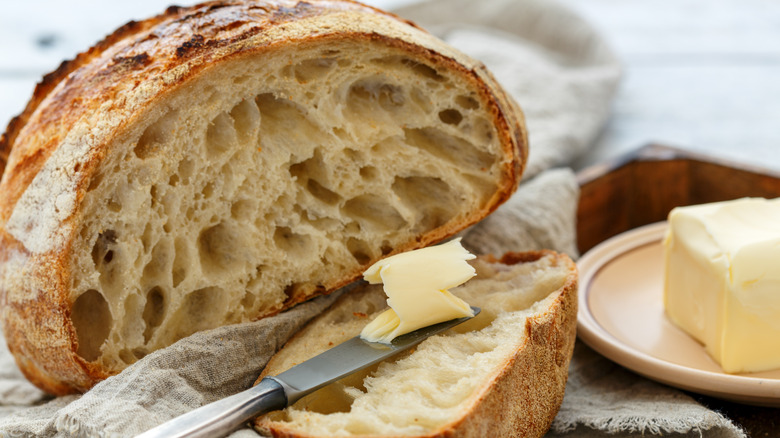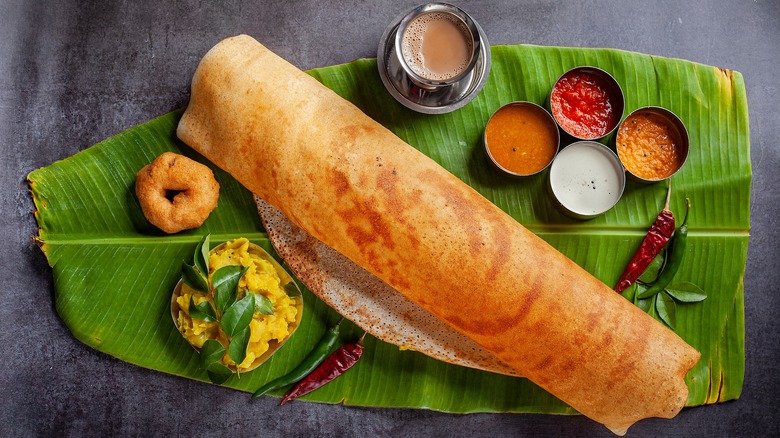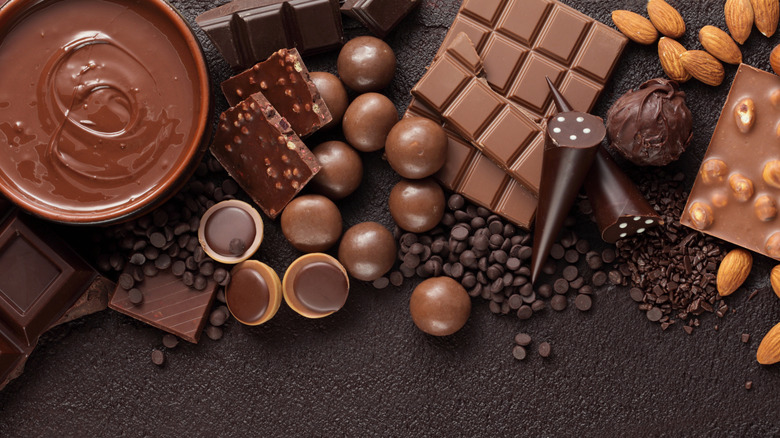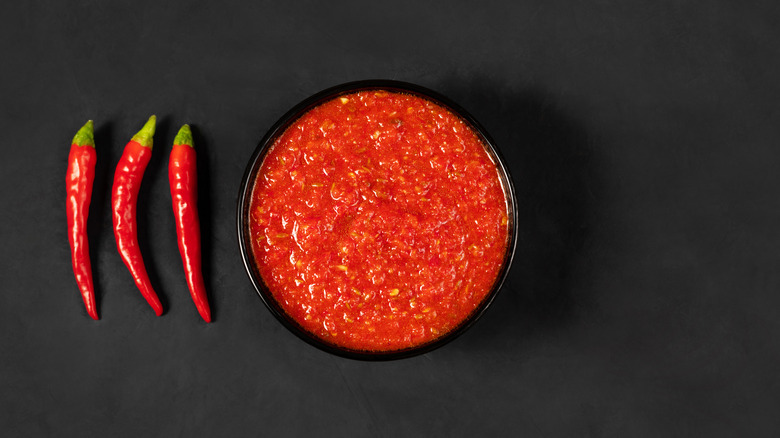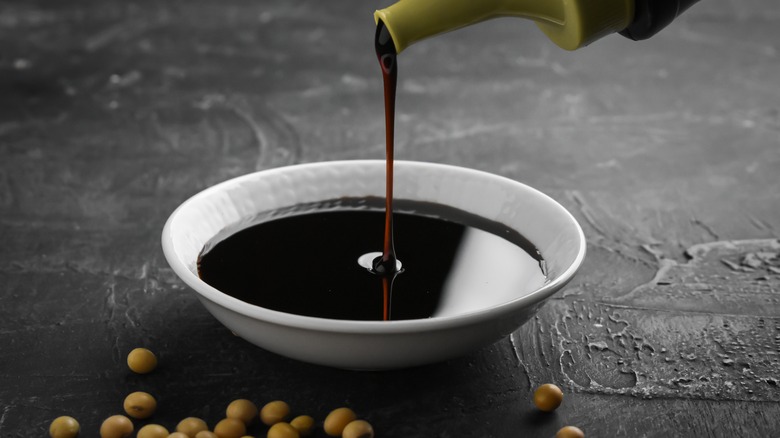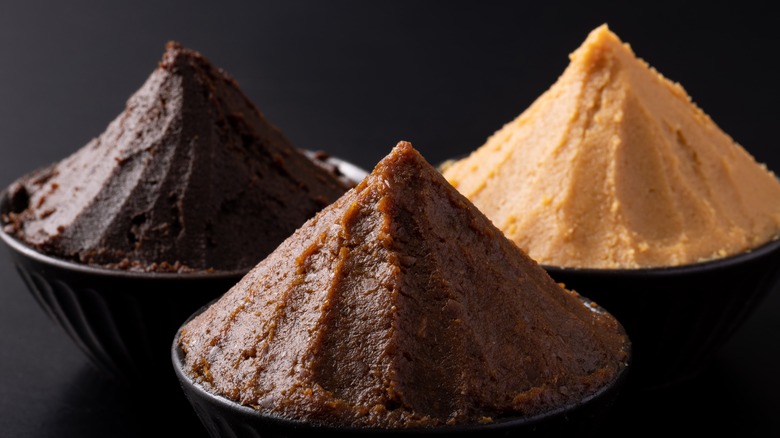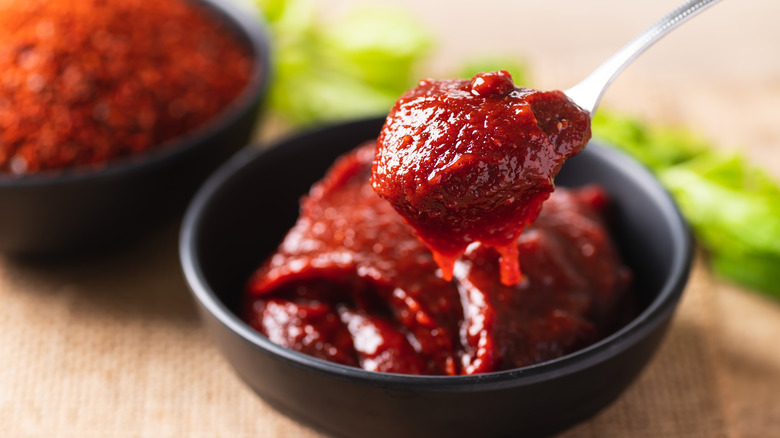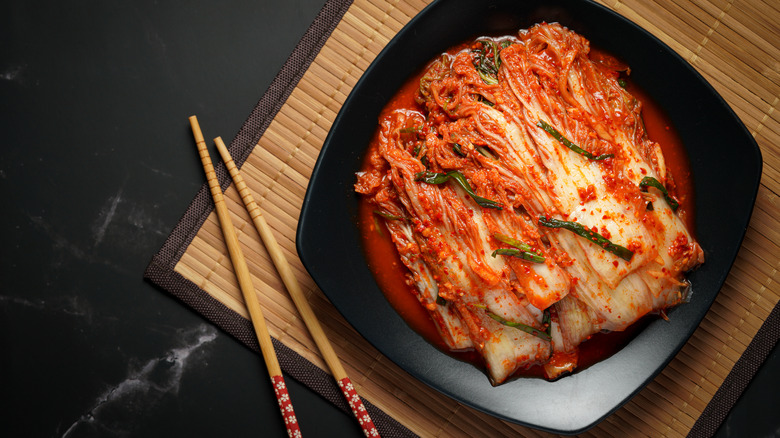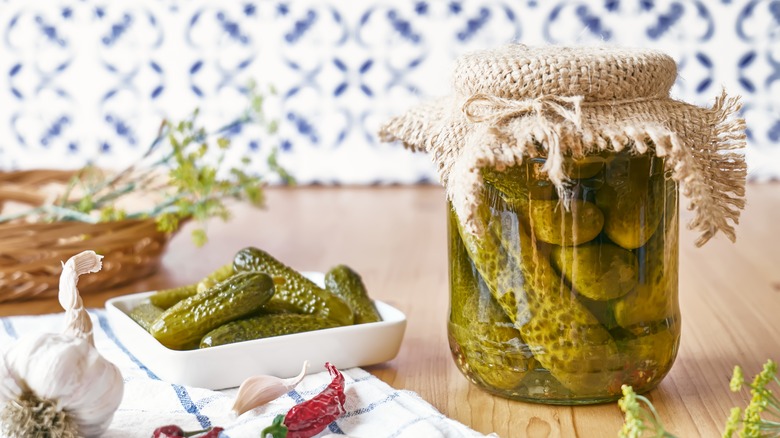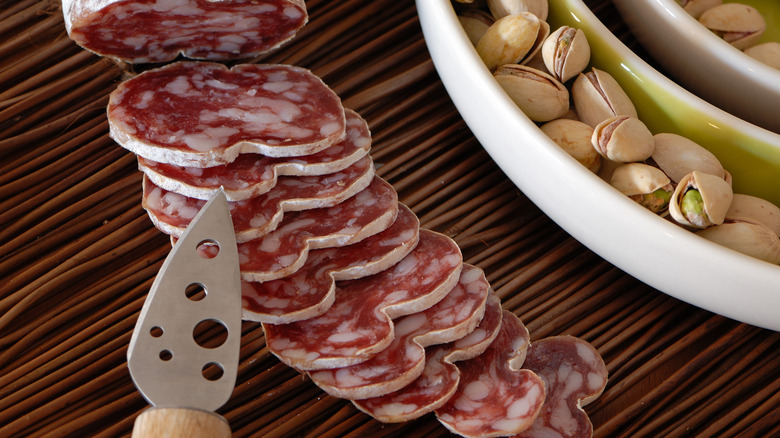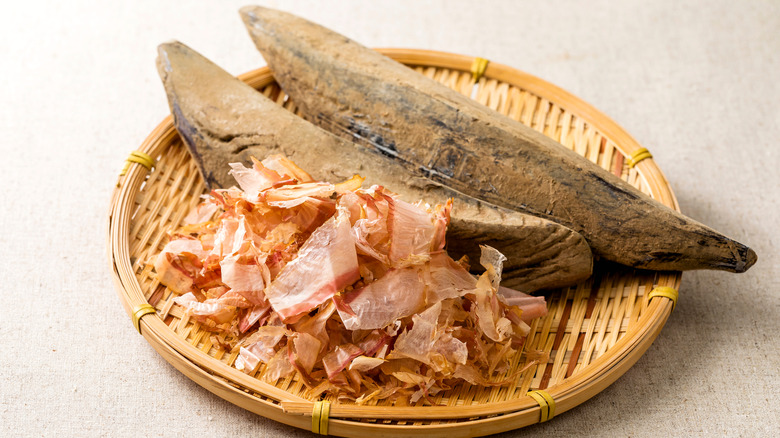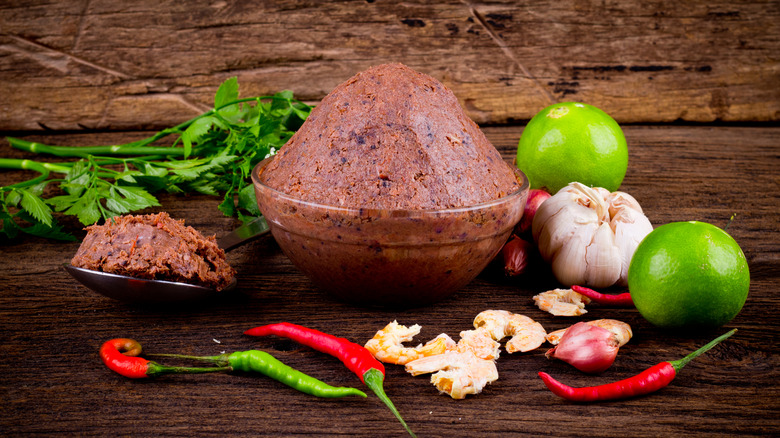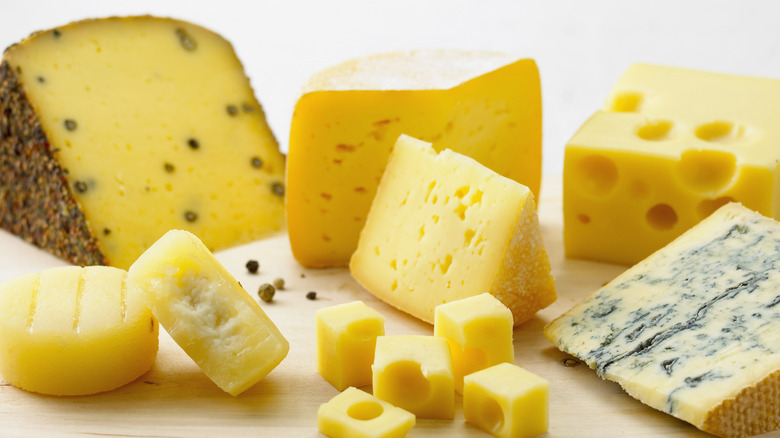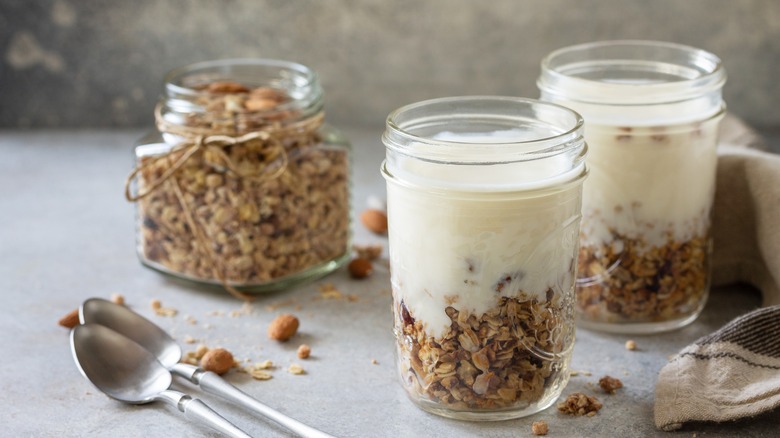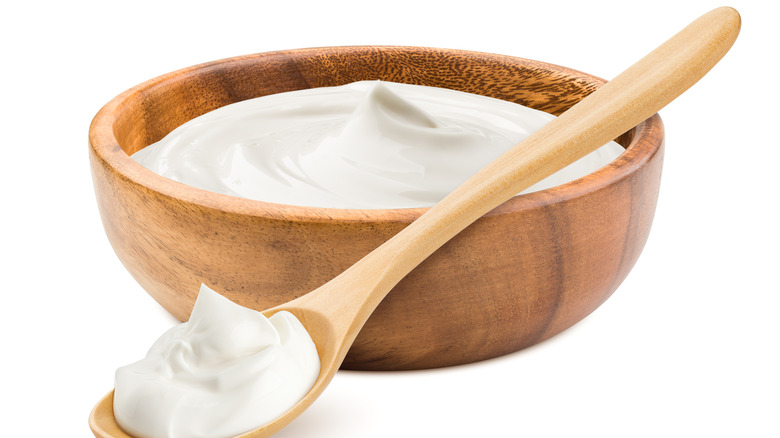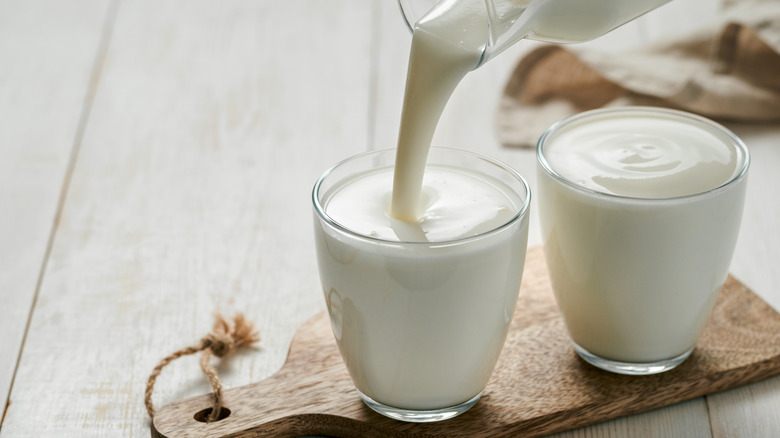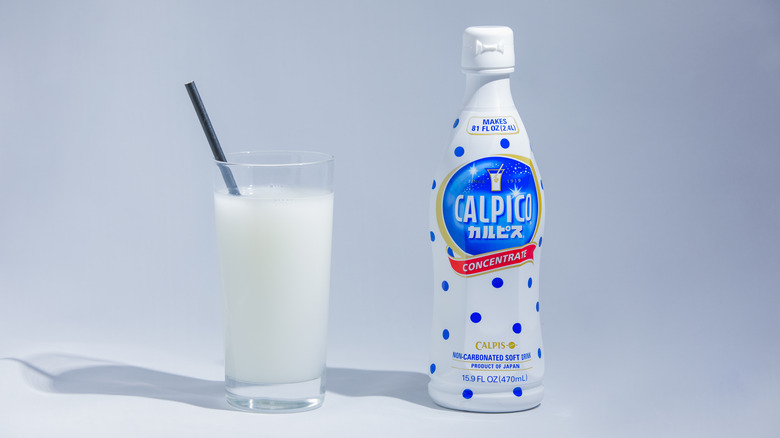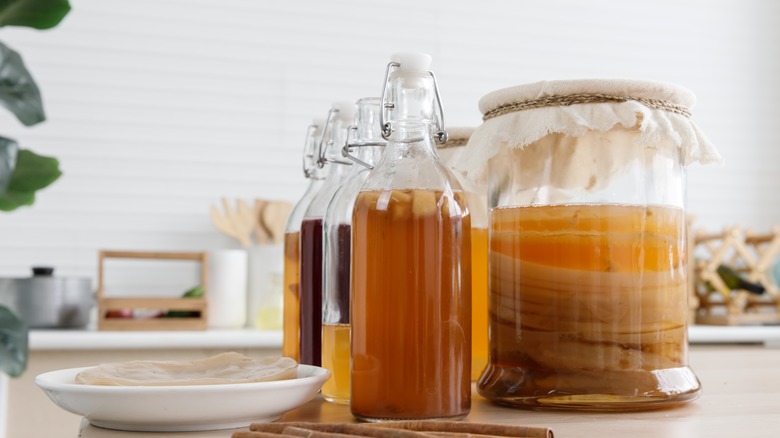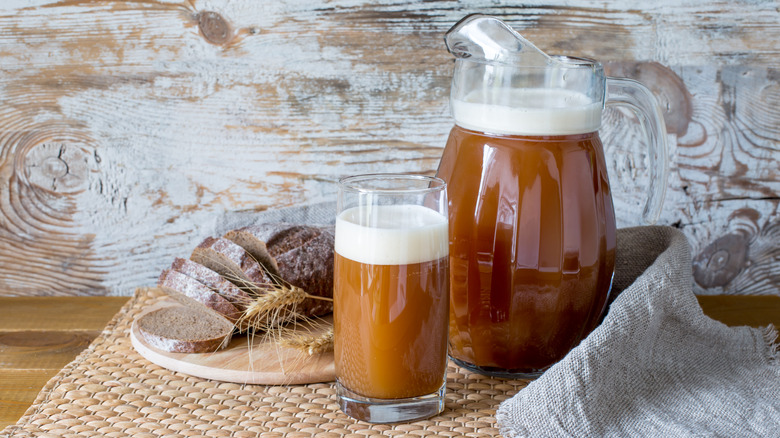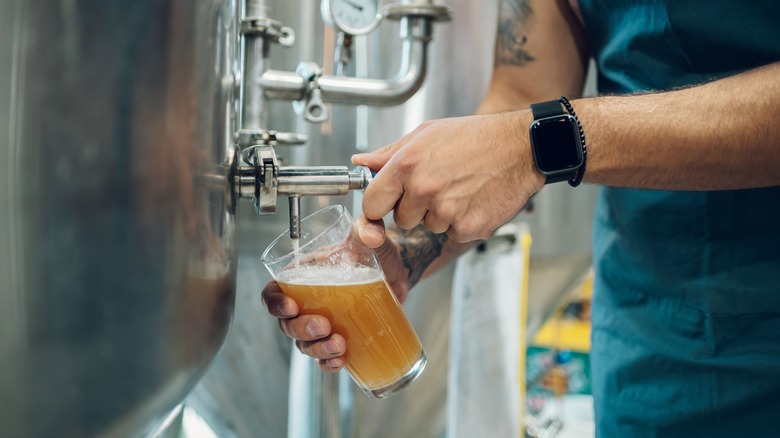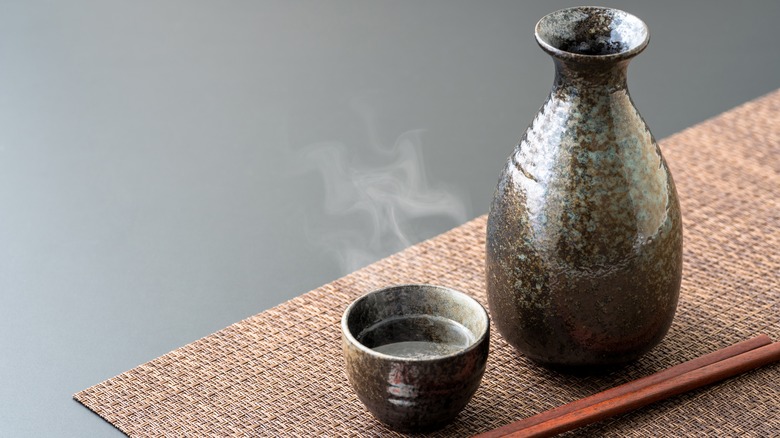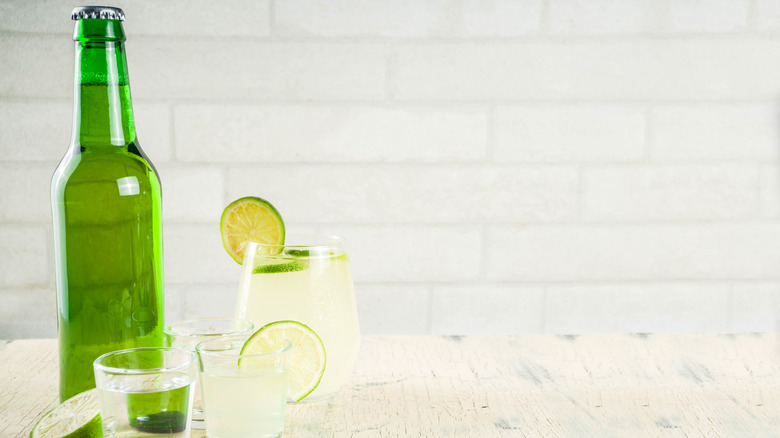28 Popular Foods That Undergo Fermentation
While we all know that fermented foods have taken over the media, fermented foods are more ingrained in our diets than we might think. Before refrigeration and modern preservation methods, fermentation was a way for perishable food items, like vegetables, meat, dairy, and grains, to be preserved. By fermenting foods, vegetables, in the form of dishes like kimchi and sauerkraut, were available all year round.
So what is fermentation? Fermentation, simply put, is a process during which molecules are broken down by bacteria. The bacteria mimic our own digestive systems, making the nutrients in fermented foods more readily available. This process also often results in carbon dioxide, which explains why things like beer and kombucha are fizzy once fermented.
In addition to this, fermentation adds many beneficial bacteria to food, making it not only delicious but incredibly good for you. Therefore, if you are looking to incorporate more fermented foods into your diet, or you are just curious about how you are stimulating your gut bacteria without even knowing, take a peek below and see what foods actually involve fermentation.
Injera
Injera, a type of flatbread that is often cut into lengths and then rolled into spirals for serving, is delicious with many stews, curries, and meats. Injera originates from Ethiopia and is made from fermented teff flour, a type of ancient grain that is mostly grown only in Ethiopia. Teff flour has a very distinctly savory and slightly nutty flavor, which pairs well with the sourness that comes from fermentation.
There are multiple fermentation phases that the batter must go through before it is ready to be cooked, but once it is sufficiently bubbly, your injera will be sure to have the iconic injera holes that soak up sauces so well.
Idli
These round, steamed rice breads pair perfectly with soups and curries and are also often eaten with just chutney or sambar. They are made from a fermented batter of blended rice and urad dal (black lentils).
The key to making light and fluffy idli is in the fermentation phase, which requires a very warm environment and plenty of bacteria. Where do the bacteria come from? You guessed it — the air. The idli batter can double in size overnight by simply reacting with the bacteria in the air which help break down the carbohydrates in the batter and convert them to carbon dioxide.
Tortillas
Another staple flat bread that makes up the base for many diets in north and central America, tortillas have a long and fascinating history. Originating in ancient Mesoamerica, tortillas today are the offspring of a very traditional method of preparing corn called nixtamalization. Nixtamalization is the process through which corn is washed, fermented, and then de-hulled before it is ground into masa and made into tortillas. The fermentation process not only beautifully transforms the corn's flavor, but also makes the masa more nutrient-rich.
Not only tortillas are made from fermented corn, but in fact, so are so many other foods made from masa, such as pupusas, tamales, and tlacoyos.
Sourdough
Perhaps you got on the sourdough bread train in the past couple of years, or maybe you have always been a diehard fan. Regardless, there is something undeniably alluring about the large holes and chewy texture of a well-made loaf of sourdough.
Sourdough, usually made from white wheat flour, but also sometimes made with parts rye or whole wheat for flavor, is perfect for sandwiches, breakfast, or a simple snack. The other beauty of sourdough is that it just keeps giving. Once you have a healthy starter it can make exponential amounts of bread which will keep you carb satisfied.
Dosas
Dosas have a compelling crisp and distinctive tang that comes from their fermented batter. Cooked on a large circular griddle, and spread out into a very thin, flat pancake, dosas can come filled with delicious stuffings like masala potatoes, or can be eaten simply with ghee.
While the batter itself is fairly easy to make, like all fermented foods, it does take some preparation. To make dosa batter you must blend rice, lentils, or a combination of the two, with water, and then let it sit at least overnight until it starts to smell sour — a sign that it is fermenting.
Chocolate
Chocolate does not have the sour taste that is often associated with fermented foods, but this sweet treat that many of us adore, is in fact an anciently fermented food. To make chocolate the first step is to pick cacao fruit, which only tastes vaguely like chocolate, and leans more towards the bitter, sour side.
The beans are picked and then left to dry and ferment, which rids the fruit of its naturally bitter flavor and allows for the deeper chocolatey-ness to shine through — and adding sugar helps the flavor too, of course.
Hot sauce
Many hot sauces, and especially fresh, spicy salsas, do not undergo fermentation — but you may be surprised by the number that do. Fermented hot sauces have an additional tang and complexity of flavor that is impossible to find in hot sauces that are not fermented. This is because fermentation is a way for yeast and bacteria to break down foods, inevitably changing the flavor.
In regard to hot sauce, the fermentation phase also allows for the sauce's flavor to be spicy, but still distinctly flavorful.
Fish sauce
This versatile, salty, and umami sauce is the absolute perfect addition to your soups, stews, marinades, and salad dressings. It brings a wonderful depth of flavor that is not exactly fishy, but more savory and salty.
Made from fermented fish —usually anchovies, but also sometimes squid, sardines, or other types of seafood — fish sauce is a staple condiment in many countries. In fact, it is so beloved that there are many different varieties of fish sauce available, including some that are strained, others that are thicker, and some made only in certain parts of the world.
Soy sauce
Soy sauce, another beloved condiment that is both umami and salty, comes from Japan and derives its irresistible flavor from — you guessed it — fermentation. Soy sauce is an ancient sauce that is made from soybeans that are mixed with salt and then left to ferment for a couple of months. The secret to soy sauce does not actually come from the salt or the soybeans, but rather from something called koji.
Koji is a type of mold that is commonly found in Japanese cuisine, and when it begins to break down carbohydrates it produces an amino acid called glutamate. Glutamate is responsible for the umami flavor that makes soy sauce so delicious.
Miso
Miso is made from fermented soybeans and rice which have been mixed with salt and koji. Much like soy sauce, miso is then left to ferment for a period of time before it is ready to be consumed in delicious dishes like miso soup.
Unlike soy sauce, which is also made with soybeans and koji, miso is not strained at the end of the fermentation process, meaning that it remains a paste while soy sauce is, of course, a sauce. Miso paste is delicious in many dishes because it contributes a nutty, sometimes, sweet, and always salty, savoriness.
Gochujang
Gochujang is a wonderful, delicious condiment hailing from Korea. This spicy, sweet, salty, and umami paste is so versatile that you will never run out of ways to use it. Pairing perfectly with rice, meat, tofu, eggs, and vegetables, gochujang always brings a deeply comforting flavor, not to mention some spice.
This fantastic paste is made from fermented Korean chiles that have been mixed with a variety of other ingredients such as salt, soybeans, and glutinous rice. If you have ever had gochujang, you may have noticed its thick, sticky consistency, which can be attributed to the grains and legumes it is made from.
Kimchi
Another Korean fermented creation, kimchi is the perfect pickle and side dish to pair with any stew or bowl of rice. This fermented cabbage banchan can be made from napa cabbage, as is most common, or from other vegetables such as green onions, mustard greens, or radishes.
Originally made as a way to preserve perishable vegetables, kimchi today is an iconic Korean staple that has a delectable depth of flavor. The spicy and savory taste comes from the chilies it is marinated in, and also from the fermentation process which adds deep layers of umami to the final dish.
Pickles
Like with hot sauce, pickles are not always fermented and can be made simply with vinegar. However, fermented pickles are magical in that they can still have that wonderful pickle taste without the extreme acidity of vinegar pickles. They may also taste more savory, or to some, funkier. This funkiness comes from the fermentation process which makes the pickles not only salty but also umami.
In fact, fermenting pickles is an age-old process and is how beloved side dishes like kimchi and sauerkraut have been historically preserved.
Saucisson
Saucisson, like many other types of dried meats such as chorizo and salami, is a fermented sausage. These sausages, which hold their own on any charcuterie board, were originally made as a way to preserve the meat before refrigeration.
Today, saucisson is not only shelf-stable, but it is also very culturally important in French cuisine. On top of that, thanks to the bacteria that is inoculated into the meat to help it ferment, saucisson has a deeply savory and delicious flavor.
Bonito flakes
Bonito flakes are a traditional topping for foods like okonomiyaki, and are also used in countless Japanese dishes in the form of katsuobushi. Made from dried and fermented skipjack tuna, the process of making bonito flakes is actually very labor-intensive and lengthy. It involves expertly cutting the fish, simmering it, smoke drying it, and coating the fish in a layer of mold before leaving it to sun dry.
Once the fish has been dried and fermented, it is ready to be shaved into flakes, which can be found in many stores or tasted in almost all Japanese soups and stews.
Shrimp paste
The process of making shrimp paste is actually quite similar to that of making fish sauce, with the main difference being that shrimp is used in lieu of fish. Furthermore, shrimp paste is not strained and therefore remains as an actual paste, which is thick, pungent, and salty.
Shrimp alone are famous for their umami flavor, so combining this with the umami that is derived from fermentation, you can only imagine how savory and deep the flavor of shrimp paste is.
Cheese
Almost all of our favorite cheeses are made through fermentation, with only some fresh cheeses being made with acid. All fermented cheeses rely on bacteria that are added to them as a live culture which then spread throughout the dairy and transform it into the desired flavor. Because the cheese industry is so large and important, most famous cheeses rely on lab-made rather than naturally occurring bacteria, to ensure consistency in their products.
For hard-fermented cheeses, renin is also needed to help the cheese firm up and obtain that signature texture that is so wonderful.
Yogurt
Along with its creamy texture and variety of flavors, yogurt is famous for its probiotics. These, of course, come from fermentation. Yogurt, like cheese, is inoculated with desirable bacteria and then left to ferment at a set temperature to let the bacteria grow and transform into the product we eat.
Yogurt is also a very nutritious food choice because, according to Medical News Today, it is high in calcium, can boost your immune system, and aids digestion.
Sour cream
Similar to yogurt but made with cream rather than milk, sour cream is another type of fermented dairy that is healthy and oh-so-delicious. This condiment makes wonderful dips, cakes, and can bring a much-wanted creaminess to almost any meal.
Sour cream can be made simply with vinegar, cream, and milk, but to make truly delicious sour cream, we recommend you inoculate it with bacteria and let it ferment. During the fermentation period, the cream thickens and develops the signature flavor and sourness that makes sour cream so delicious.
Ayran
Aryan, which is a staple in any Turkish breakfast and is commonly consumed all across the levant, is a dairy drink that is thick, sour, and refreshing. Usually made from yogurt, milk, and starter culture, this drink can be consumed with any meal. It also is the perfect beverage to pair with something spicy because the creaminess will calm down the burning on your tongue.
Next time you are at a Turkish restaurant, make sure to try this beloved drink. It is perfect for those who love lassi and enjoy a tangy, creamy treat.
Calpico/calpis
Calpico, also known as calpis, is an opaque fermented beverage from Japan that is made with lactic acid and calcium. In fact, in 1919, calpis became the first drink in Japan to have lactic acid and calcium, and it is now consumed regularly for its flavor and nutritional benefits.
With a slightly sweet flavor that is accented with the signature tang of fermentation, calpis is a wonderfully refreshing drink to have on a hot summer day, especially when poured over ice.
Kombucha
Kombucha took over the U.S. beverage scene in the past few years, and now this beloved drink can be found in most grocery stores and is even sold on tap at cafes, restaurants, and bars. Available in an endless array of flavors from ginger to rainbow, kombucha has several health benefits and is both refreshing and great for your gut.
Thanks to the SCOBY bacteria that breaks down sugars into carbon dioxide, kombucha gets its signature bubbles and slightly funky flavor from the fermentation process it undergoes.
Kvass
Another type of fermented beverage that is similar to kombucha, and arguably just as delicious, is kvass — and boy, it is an interesting one. This Russian "soda" is made from fermented bread. That's right. It comes about from bread that has been mixed with malt, sugar, and water and left to ferment until it creates a delightfully dark, bubbly kvass.
Fairly light in flavor and sweetness, with a hint of malt and a bit of bready flavor, kvass is a very complex drink that is also wonderfully refreshing. On top of that, it is easy to make at home so that you can always have a bubbly, sweet drink on hand.
Coffee
Another everyday drink that many of us may take for granted, coffee would not be what it is without the fermentation process it goes through. Regardless of how your coffee is processed, it must undergo fermentation in order to rid the beans of their green, grassy flavor and help develop the dark, complex flavor of coffee that we all love.
Once picked, coffee beans are then dried and fermented before being roasted and ground to make your favorite morning drink.
Wine
If you know anything about natural wine, you probably know that it uses natural bacteria to ferment the grapes and produce alcohol. What is not unique about the natural wine process is that all wine actually undergoes fermentation, but it is usually aided by the addition of specific bacteria.
During the fermentation process, the bacteria digest the sugars from the grapes, simultaneously producing alcohol and decreasing the sugar content of the wine. In order to stop the fermentation process, wine must be kept at a consistently cool temperature, think wine caves.
Beer
Similar to wine, but made with barley rather than grapes, beer is another beloved beverage that comes in countless varieties that all share one characteristic, they are alcoholic thanks to fermentation.
The fermentation process of beer is fairly complex, but not too complex. Many people brew their own beer at home and are able to marvel at the magic of fermentation as it happens before their eyes. If you ever want to take up a hobby that will yield very entertaining results, give beer brewing a try and enjoy how the bubbles and flavors appear as your batch goes through fermentation.
Sake
Another alcoholic beverage made from fermentation, sake is made from rice and has a higher alcohol content than beer. Sake is commonly enjoyed in Japan and is also used in cooking much like white wine is. The addition of sake to food brings a wonderful umami flavor and makes basic dishes irresistible.
Part of the allure of sake comes from its fermentation process. As bacteria break down the carbohydrates in the rice, alcohol is formed. But that is not all. The bacteria also change the flavor of the whole drink, making it deeper, more complex, and alluring.
Soju
Soju traditionally is made only from rice, but it is also commonly made from wheat, tapioca, or sweet potatoes. However it is made, soju should not be confused with sake and other rice alcohols like sochu. Sake and sochu are made with koji, while soju is made with rice and other bacteria. Furthermore, soju is distilled which results in a thin, clear alcohol.
Soju, with its sharp, slightly sweet flavor, is delicious as it is or can be added to cocktails for an even more interesting drink.
